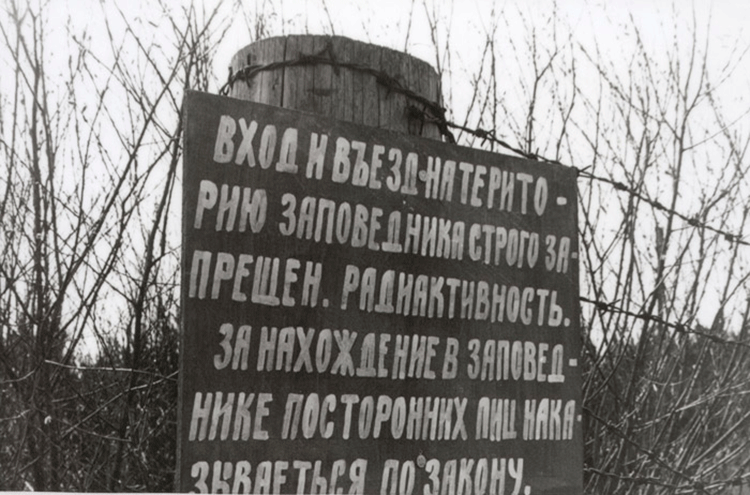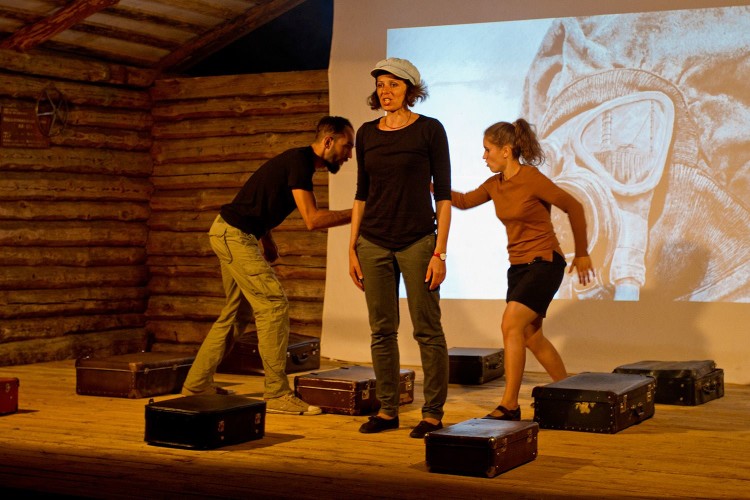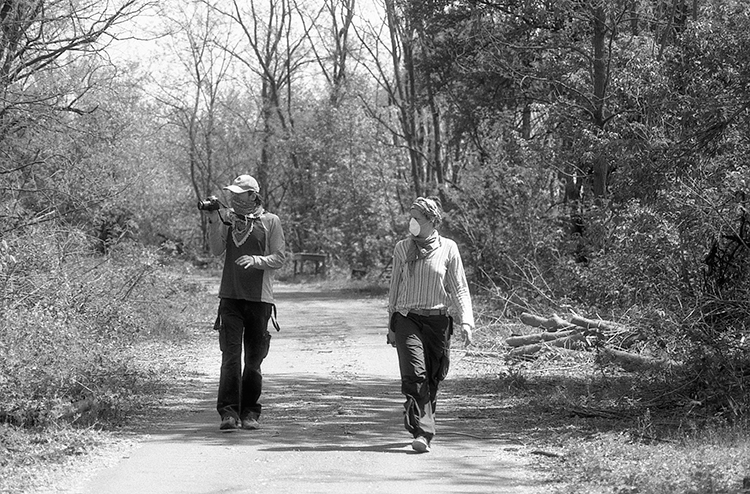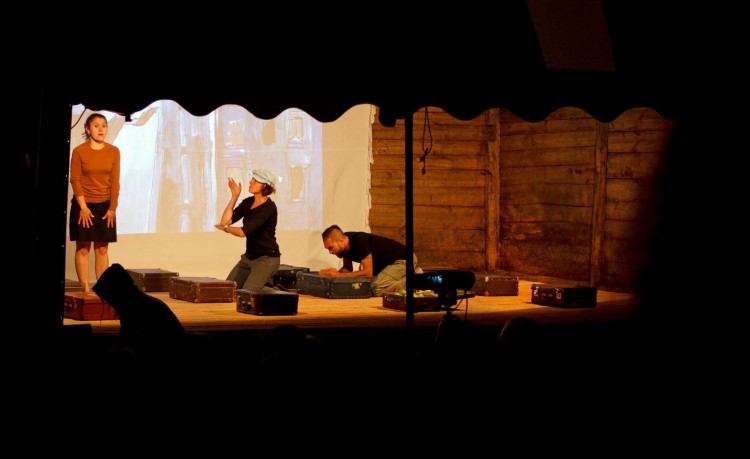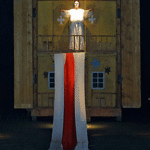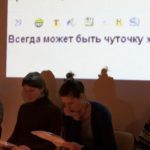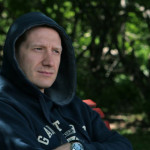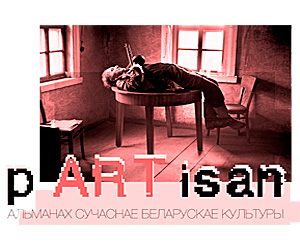Tania Arcimovič
The performance Chernobyl of the independent theatre group Kryly Halopa (Slave’s Wings) from Brest is the first part of the project Stories of Belarus, originally conceived as a theatrical multi-volume project with every part being dedicated to the events of the country’s contemporary history.
The performance is created on the basis of two expeditions to the Belarusian part of the Zone of resettlement and Polessky Radiation Ecological Reservation, interviews with people who were evacuated after the Chernobyl accident, the documents relating to the consequences of the disaster and the data obtained from the Internet forums on the construction of a nuclear power plant in Astraviec. The premiere was held in December, 2012 at Masks International Theatre Festival in Poznan. Chernobyl was also shown at festivals in Denmark and in Wengaithen (Poland). Finally the Belarusian public was able to watch the performance, too — during the theatre-ecological festival Pryzba.
The subject of Chernobyl and is still taboo in the Belarusian society. On the one hand, the Chernobyl disaster is remembered in textbooks and encyclopedias, books are written about it, even performances are staged (for example, in 2002 — The Chernobyl Prayer according to Svetlana Alexievich’s book at Republican Theatre ofBelarusian Drama). On the other hand, this issue clearly does not get due reflection from the Belarusian society and the state. This is vividly demonstrated by the approval which was immediately given by the Belarusians as a response to the construction of a nuclear power plant in Astravets in 2008 (only 22 years after Chernobyl).
This silence could be explained by the traditional short memory of the Belarusians, which the philosopher Valancin Akudovič, for example, connects with the fact that “every successive disaster brought the Belarusians nothing but another great trouble, [and therefore] our mentality has developed a variety of mechanisms allowing to remove these catastrophes from the living memory as something useless or perhaps even harmful”[1].
But the strong reaction, with which the Belarusian viewers perceived the Brest performance Chernobyl indicates that the memory has not completely disappeared. It simply lacks space, where it could manifest itself.
Thus, during the performance the audience did not only get actively involved into the debate, but also shared their own personal memories about the catastrophe. For an hour and a half the theater became a kind of an island, where everyone’s voice was heard.
The play begins with numbers. The voiceover speaks about the accident, about the measures that were (not) taken, about the consequences — the contaminated territories, devastated during and after the explosion, about the sick and the relocated ones. For example, about 66% of the country’s territory was contaminated by Cesium-137, that is the strongest Chernobyl’s blow actually fell on Belarus. Further there came a list of diseases, the number of which increased after the accident — cancer, leukemia, radiation sickness, stillborn children, all sorts of pathologies …
The figures captured almost all the space, their intensity made it hard to breathe and the only thought was pulsating in the head. Why did not I know anything about it? Iron dust was crunching on the teeth.
A video starts in the background: the expedition into the zone. One dead village, almost like a ghost, gets replaced by another – “a paradise”, as one of the spectators would call it, “because no man is present there”. The actors begin to tell real stories of people connected with the accident. A woman who moved from the contaminated area — first into one village, then to Kiev area, returned home and finally ended up in Brest. A man – a catastrophe’s liquidator – who became needed by nobody: the 3rd degree of disability does not provide him with anything. An old woman who lives with her disabled husband in the zone — so-called self-settlers. In the contaminated areas they continue keeping a household and their son calls on them from Mahiloú to help himself with some home food (“Well, I keep telling them, if we have radiation here, then how come butterflies are flying around and bumble bees are buzzing ? And my cat Vaska is catching mice!” (Svetlana Alexievich). The old woman sleeps with an ax under her bed since drug addicts or runaway prisoners often turn up in the neighborhood taking over abandoned houses and abusing alcohol there (“But don’t show me on TV, because here I have told you too much …”).
These interviews presented in the form of monologues make reference to The Chernobyl Prayer by Svetlana Alexievich: in a similar way these stories are full of the feelings of loss, obedience and hopelessness. Performed in an exaggerated theatrical manner (as a traditional form of the characters’ emotional state), these monologues contrast with a line of present day events, namely the events that are connected with a nuclear power plant in Astravets are retold by means of documentary theater (in fact, on behalf of the actors themselves or with a certain distance from the characters). It is exactly on this method – showing past through theatricality and present through the document and non-game – the whole performance is built, which allows to draw a clear distinction between the two time dimensions. And it does have sense: too often we think about the events in history as about something artificial, blurred in school textbooks to such an extent that they evoke no living emotions any more, like archives — covered with a thick dust layer. But the performers try to form an opposite effect – they aim at bringing the audience very close to these events:
what seemed like past, perhaps not fully conscious, put behind our backs, suddenly becomes very close to us.
The project of the construction of a nuclear power plant on the territory of Belarus was developed as early as the 1990s, but the decision was taken in 2006, and in 2008 the program was finally launched. The building site was planned to be erected in the town of Astravets in Grodno region, 23 km from the Lithuanian border. Public discussion of this decision has not been held (although earlier it was promised even to conduct a referendum). However, in October 2009 a meeting seemed to have been held in Astravets where government representatives faced the public. And there “in the best traditions of the Soviet propaganda” the decision was made once and for all (in the course of discussion the speakers even recited poems like: “… the country took up a noble action — / to promote a stable development of nuclear energy in succession. / and let us proudly claim our ambitious result / in Belarus there certainly must be a nuclear power plant!”).
The construction began in 2011, even before the final version of the project was adopted (approved in 2013). The nuclear power plant will consist of two units, the first one is planned to be launched in 2018, the other one — in 2020. From time to time activists organize protests, collect signatures for petitions, write letters, but nothing brings any result — at least at the level of public outrage. According to the Independent Institute for Sociological and Political Research, in 2013 34% of the Belarusians were in favor of the construction, 37.6% were against, 22.6% — indifferent and 5% did not know what to say.
Our contemporaries’ voices are heard in the play, too. The director and the actors addressed one of the Brest forums on the topic of Astravets nuclear power plant and voiced the chat making a video (during the performance we do not see the actors, they are shot online and the image is transmitted tothe stage, on another screen we can see forum members’ names and time when the comment were posted). Most of the forum participants oppose a new nuclear power plant, they share their own experience such as illnesses, diagnoses, deaths of loved ones. One protagonist talks about his fishing trip to a place marked with a radiation sign, where he nevertheless saw collective farm cows grazing around with their milk being further taken to state farms and mixed with the clean one. “To put it short, I decided not to fish there and returned home”. Someone leaves a comment in favour of the building, saying that Belarus is in need of energy, that the plant would make us self-contained and self-sufficient. But this is rather a single opinion, which is immediately severely made fun of. The chat is interrupted with the announcer’s voice: a message is heard about the accelerated pace of work, about the project cost which would be lowers than it had been planned.
“How do they save money? – the actors pose ironical questions. – Will they cut it out from cardboard and tie with cellotape?”- “Oh, now! Why cellotape? With just a piece of rope!”
These forum dialogues expose in even a more vivid manner the gap that exists between society and the state: parallel worlds that are completely disjoint with the top of the world being almost impossible to reach. “Here you all have courage to criticize, but are you ready to come out to the streetswith slogans and banners?”– one of the performers asks the audience. And in response only silence is heard.
The actors begin to play children’s games — again a reference to Alexievich: “First surprise … The feeling that those are just military trainings … the game … But it was a real war. Nuclear war … Unknown to us: we have no idea what is scary and what is not, what to fear and what not? Nobody knew”. Now we see the Chernobyl disaster through the children’s eyes. “Grandma started to give us spoonfuls of iodine, well, it is good that at least she added some water”, — says one girl. “My mom put me on a bus and off we went. Where and why — I did not understand”, — a boy says. In the background children’s drawings on the catastrophe are shown (in the past the theater Kryly Halopa held a special competition and an exhibition in Brest). At a certain point the performers quit the game and already on their own behalf start telling their personal stories related to their memories about Chernobyl. “I was always forced to walk out wearing that stupid hat …” — “And my mother used to dress me in overalls, although it was so hot outside…”.
That stupid hat becomes a sort of a microphone, which is passed to the audience with a proposal to join the story-telling. And we do not wait long. People actively raise their hands and start speaking — about a wife who lost her baby because the fetus did not developproperly; about the level of radiation in a town where military chemists had buried three settings; about a dog named X-ray in a military unit; about parents in panic and a black-and-white TV screen with the news. Distant memories occur in the minds of each regardless of whether (s)he verbalized them or not. I was two years old, and the only thing I remember are those endless check-ups of the thyroid, for which we were taken to school, and seaweed we had to eat almost daily. Space for memories unites people: more than ever you feel the threat which hangs in the air again.
We still do not know anything about Chernobyl. Shall we be told the truth, if something happens? — the performers ask. Or were we really born to turn Stalker into reality?
“We are the doomsayers. We do not do anything, because we believe that all will turn up the way it should. We believe in fate. This is a story that we have… In every generation there is a war … Blood … How could we be different? We are the doomsayers …” — says one of the Aleksievich’s protagonists. “The Belarusians need this nuclear power plant, so that they go through it again, and maybe then they would realize, would understand the lesson history teaches them!” — an open-ended comment one of the spectators leaves. Is it the only way? Is the gap between offline and online modes in Belarus really so irreducible?
Or the creation of such, even single, spaces, where the memory is awakened and people feel the community can reduce this distance?
As it happened during the performance Chernobyl where recent past and our present blended together and the spectator found him/herself at the crossroads of these dimensions to feel their involvement in the process of shaping the future.
Published on partisanmag.by
Translated by Volha Bubič
[1] V. Akudovič. The Apocalypse, which Never Happened // pARTisan. 2011. № 14.Opinions of authors do not always reflect the views of editors. If you note any errors, please contact us right away.


